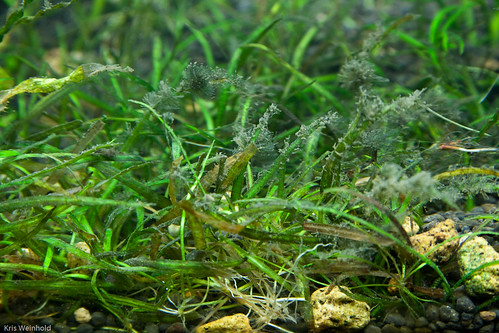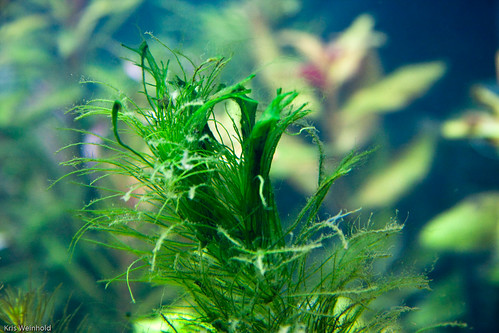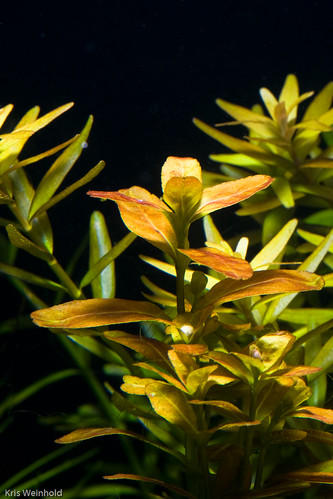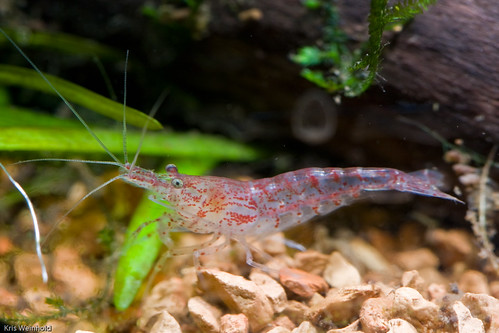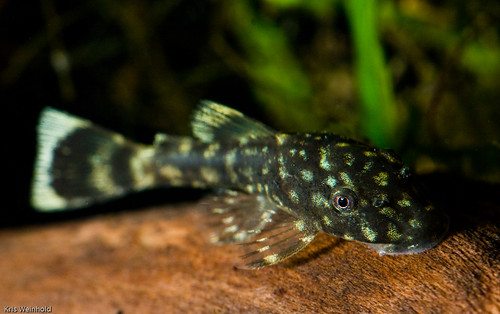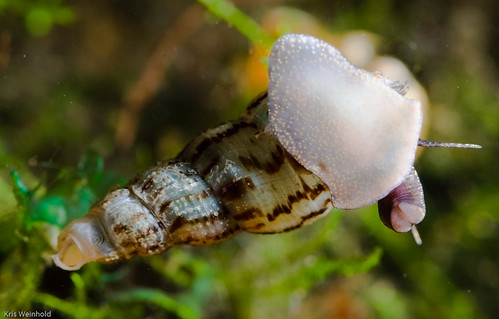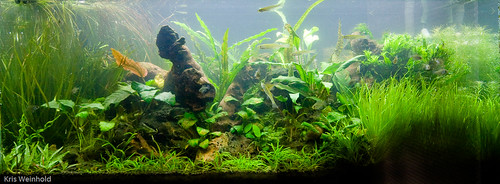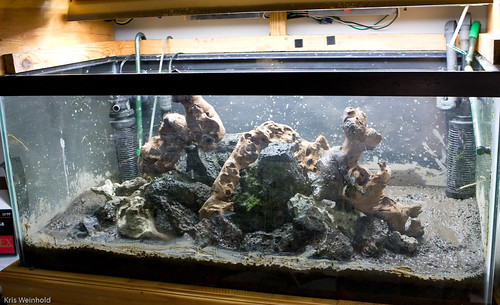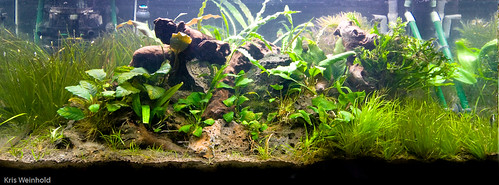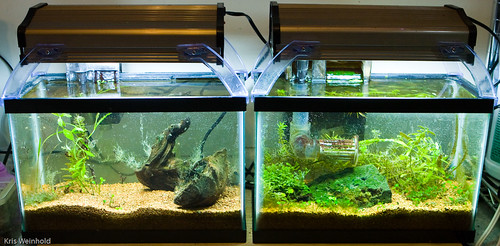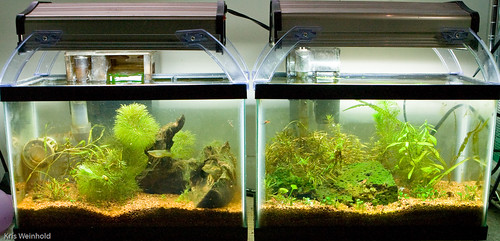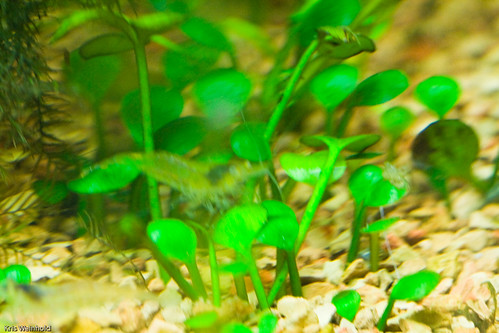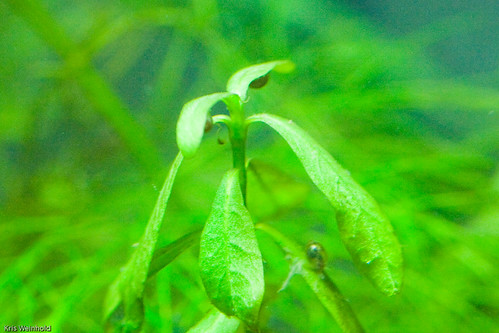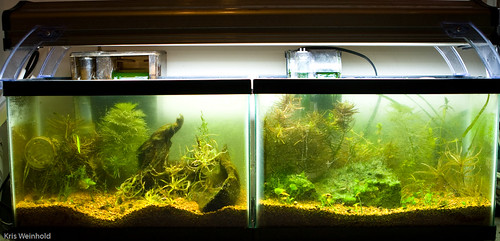Tending to the Farm
March 22nd, 2009Before I went to Seattle, the 40G had started to show signs of something going wrong. This is the aquarium with worm casting underneath the substrate, but also the aquarium that I moved from another part of my house a few months back. Really, ever since that move, I’ve been dealing with a ton of particles coating a lot of the plants. I thought I could make it go away with regular water changes and extra vacuuming, but that didn’t seem to work. Compounding the situation, I suspected that the Bluespotted Sunfish or Banded Killifish that were in the tank might have been doing a little bit of digging around.
I think the problem stemmed from not rinsing out the top-layer of the substrate when I moved the tank. Anyone who’s ever used ADA Aquasoil before knows that after awhile, parts of the substrate can degrade into mud. I should have washed away this mud when I did the move. Instead, the mud kept getting uprooted into the water column, coating the plants, and causing algae.
So, in effect, that’s what I spent several hours yesterday doing. I removed nearly all of the plants from the tank. Moved the fish into my new 54G native-themed aquarium, and proceeded to empty and fill the aquarium several times in order to vacuum all of the substrate.
I can only hope that now I’m all set to continue getting great growth from this tank. The other benefit of me doing this is that I was able to rearrange all of the plants in the tank, thin some of them out, and free up a lot of room for more plants. Collectoritis here I come!
